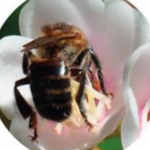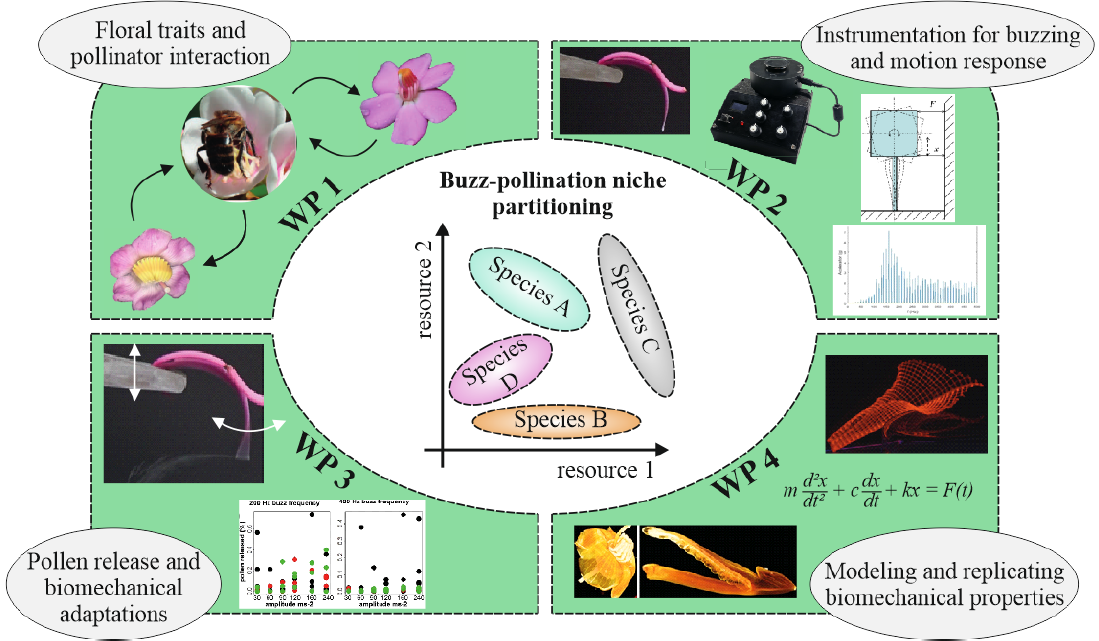
BioBuzz
Description
Decades of research have shown that the great diversity of flowering plants has evolved in interaction with different pollinators. For this purpose, mainly closely related plant species have been compared that are pollinated by different animals (e.g., one species by bees, the other by hummingbirds) and thus differ very strikingly in their flowers. In many plant groups, however, hundreds of species have evolved that are all pollinated by the same group of animals (e.g., bees). A great diversity of flowers can also occur in such plant groups, but how this floral diversity arises in adaptation to the same pollinator group has not yet been studied.
Vibration pollination by bees represents such a pollination system in which thousands of plant species are pollinated by bees. Pollen contained in flowers, which serves both for plant reproduction and as food for bees, can only be released when bees vibrate the flowers with a certain frequency and amplitude of movement. Many vibration-pollinated plants have a very similar flower type with petals folded back and stamens arranged in a cone shape (in which the pollen is located), such as tomatoes, potatoes, or kiwi. However, in the large tropical plant family Melastomataceae, an enormous variety of vibration-pollinated flowers has emerged, with both cone-shaped stamens and complexly arranged stamens with conspicuous stamen appendages. However, the extent to which this floral diversity represents adaptations to different bee species, and which floral traits (e.g., floral scent, floral colors, pollen quantity, floral size, biomechanical vibration properties of flowers) are relevant for specialization to different bee species, is unclear.

In our project we combine approaches of pollination biology and flower evolution with methods of mechatronics to investigate how Melastomataceae flowers have adapted to vibration-pollinating bees. To this end, we will document flower-pollinator interactions directly in natural habitats in Latin America in collaboration with Latin American colleagues and conduct artificial flower vibration experiments using a vibration system we designed. Furthermore, we will structurally study flowers using computed tomography, and model and recreate the biomechanical properties of flowers using computer simulations and 3D printing. The combination of pollination biology and mechatronics approaches will allow us to study both ecological interactions and biological structures according to mechanistic principles. Since vibration pollination occurs in about 10% of flowering plants, including important crops, we expect both essential insights for basic research and directly application-relevant results for the agricultural industry.